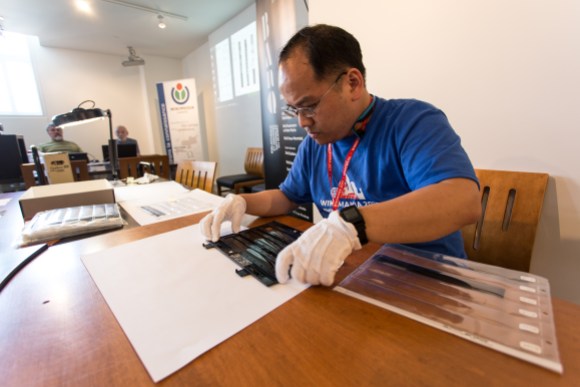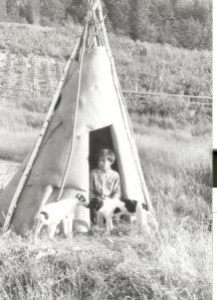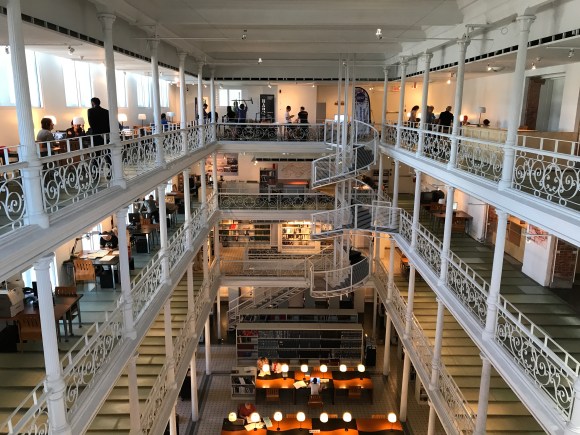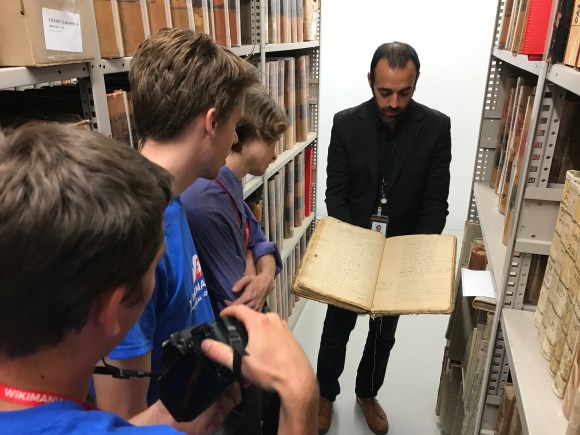
Many archive centers suffer from budget cuts and must make the difficult choice of selecting certain collections to preserve to the detriment of others. Over the last few years, Wikimedia Canada has been involved in a project to create Wikipedias in Aboriginal languages. It was with this in mind that Bibliothèque et Archives nationales du Québec (BAnQ) called on the participation of Montrealers to preserve photographic archives by organizing their first scan-a-thon.

Frédéric Giuliano, coordinator-archivist, transferred four archive fonds, also known as collections in some countries, to BAnQ Vieux-Montréal from three BAnQ centers:
- Louis-Roger Lafleur (1936–1952, BAnQ Rouyn-Noranda)
- Julienne Sioui (1920–2008, BAnQ Québec)
- Placide Vigneau (1842–1926, BAnQ Sept-Îles)
- Famille Picard (1762–1958, BAnQ Québec).
These archives illustrate the lives of the Cree and Algonquins of the Abitibi, the Innu from the Côte-Nord region, and the Atikamekw from the Mauricie region. As these archives are quite old, the negatives have become oxidized; several images were already permanently damaged. As such, they needed to be digitized as soon as possible.
For this activity and the future scan-a-thons, Wikimedia Canada and the WikiClub of Montreal acquired a specialized scanner, the Epson Perfection V850 Pro (recommended by BAnQ archivists), which allowed the scanning of negatives on film in very high resolution. Of course, it was necessary to have an equivalent digitizer if not better than that used by the digitization department of Bibliothèque et Archives nationales du Québec.
After a short training of an archival specialist, the volunteers took turns to place the negatives in the film holders, while others digitized them.

Quality assurance
At the same time, other volunteers ensured that there was no dust, that the images are complete, and other quality control. Then teams of volunteers, on each side of the consultation room (photo), received the photos on USB sticks, uploaded them to Wikimedia Commons and in some cases described the images, as not all have original descriptions. Other participants translated the descriptions into several languages, and if a Wikipedia article can be illustrated by one of these images, participants will improve the article.
Thus at the end of the day, more than 500 images and documents, dating from as far back as the 1700s, were digitized and uploaded to Wikimedia Commons. The archives will directly benefit from this as well—through the free license on Commons, BAnQ can take and use those previously undigitized photos and descriptions in their own catalog.
Once the fonds were uploaded in Commons, volunteers from around the world digitally restored some of the photos by removing wrinkles, dust, and tears. Digital photo restoration is something of a speciality for some Wikimedians, with perhaps the most notable case coming with an image of the Wounded Knee massacre. The image, uploaded by the Library of Congress, was restored by a Wikimedia editor who found that seemingly random background detritus was actually four different bodies from the massacred Sioux tribe.

And then?
This experiment was a conclusive success, with both participants and BAnQ delighted with the results. Wikimedia Canada and BAnQ are already planning more scan-a-thons!
All of the scanned and uploaded images can be found on Wikimedia Commons.
Thank you to everyone who participated in this project. Preserving our memory is a priority.
Benoit Rochon, President
Wikimedia Canada

Can you help us translate this article?
In order for this article to reach as many people as possible we would like your help. Can you translate this article to get the message out?
Start translation